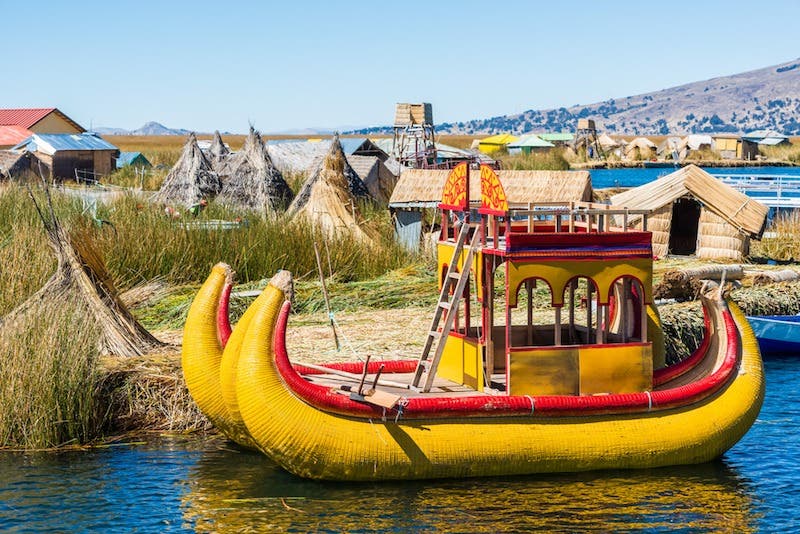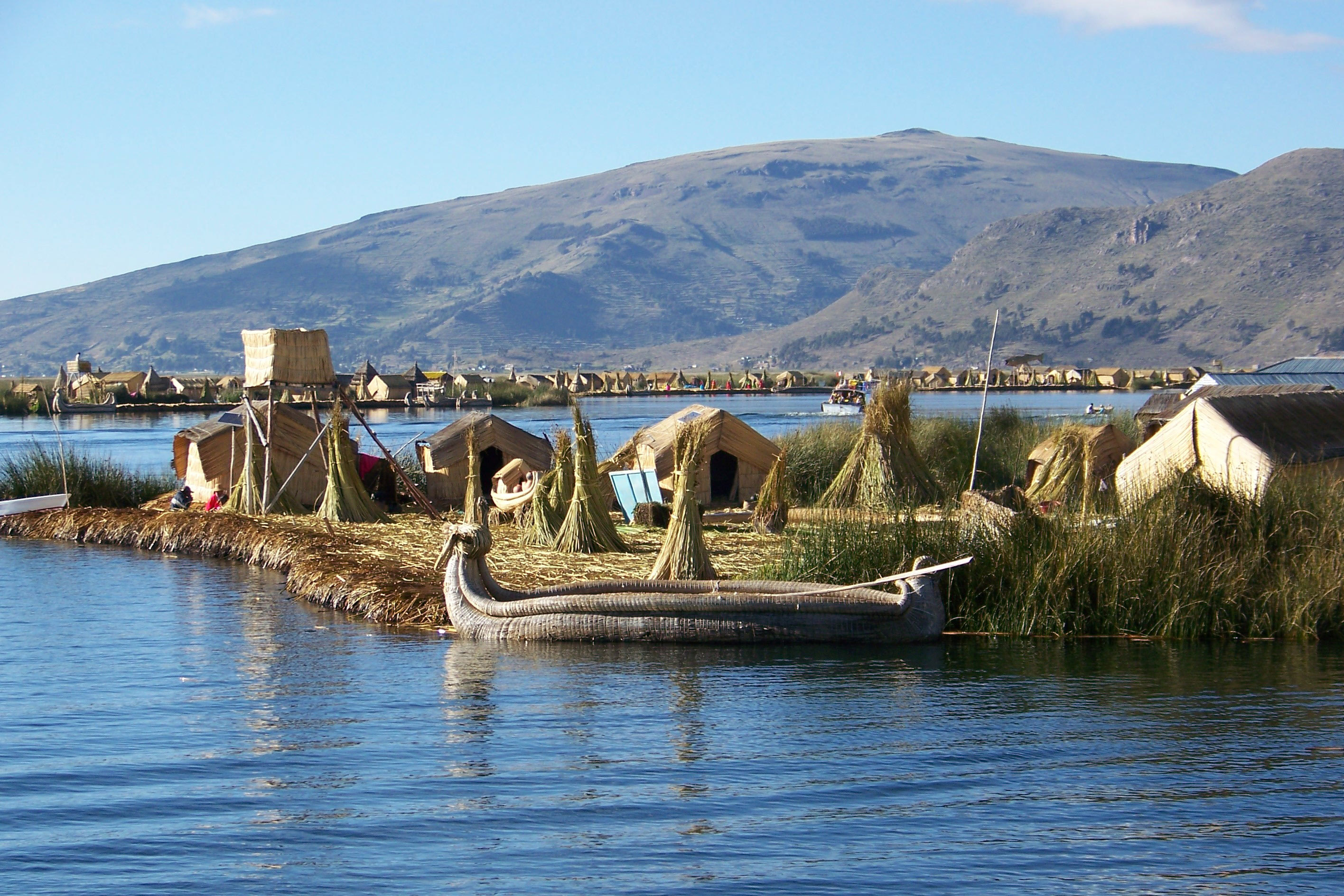In peru there are floating islands found in lake titicaca these islands were built on stacks of reeds and designed to easily be moved away from danger

Floating Islands of Lake Titicaca in Peru
Lake Titicaca, located in the Andes Mountains on the border between Peru and Bolivia, is renowned for its remarkable floating islands. These man-made islands, made entirely of reeds, have become one of the most fascinating attractions in South America. The communities that inhabit these islands have upheld their traditional way of life for centuries, relying on the reeds and the lake itself for their livelihoods.
The floating islands, known as “Uros Islands,” were built by the Uros people, an indigenous group that has inhabited the region for hundreds of years. The Uros began constructing these unique islands as a defense mechanism against rival tribes and external threats, allowing them to easily move away from danger.
The construction process of these floating islands is truly a marvel. The Uros people gather totora reeds, a native plant abundant in Lake Titicaca, and meticulously layer them until they form a thick, sturdy surface. These reeds provide a natural buoyancy, allowing the islands to float on the surface of the water. To ensure their stability, the reeds are replenished every few weeks, as the lower layers decompose over time.
The Uros Islands are not fixed in one location, adding to their allure. Using long reed poles, the Uros people navigate across the lake, moving their islands as needed. This mobility allows them to explore different parts of Lake Titicaca, find better fishing spots, or escape adverse weather conditions.
Living on a floating island is a unique experience. The Uros people built everything they need on these islands, from houses and schools to churches and markets. The houses, also made of reeds, provide comfort and protection from the elements. The island community relies heavily on fishing, as well as trading handicrafts and tourism to sustain their way of life.
Visiting the floating islands is a truly unforgettable experience, providing tourists with a glimpse into a different way of life and a deep appreciation for the Uros culture. Stepping onto an island made entirely of reeds gives visitors the opportunity to understand the Uros people’s resilience and resourcefulness in adapting to their environment.
The Uros Islands have attracted international attention and admiration for their uniqueness. They have been featured in various travel publications, documentaries, and even UNESCO has recognized the Uros people’s living heritage. The islands have become an important destination for cultural tourism, contributing to the local economy and providing opportunities for cultural exchange.
In conclusion, the floating islands of Lake Titicaca in Peru are a true testament to the ingenuity and adaptability of the Uros people. These remarkable man-made islands, built on stacks of reeds, are designed to easily be moved away from danger, allowing the Uros to live in harmony with the ever-changing environment of Lake Titicaca.
For more information and breathtaking images of the floating islands, please refer to the Washington Post article.


Related Posts
Quick Links
Legal Stuff

